The Plain Http Request Was Sent To Https Port
HTTP (Hypertext Transfer Protocol) and HTTPS (Hypertext Transfer Protocol Secure) are both protocols used for communication on the internet. They define the rules and standards for transmitting data between a client (usually a web browser) and a server.
1) The basics of HTTP and HTTPS:
– HTTP: HTTP is the foundation of the World Wide Web. It allows for the transfer of various types of data, such as HTML files, images, videos, and more. It operates on port 80 by default. When a web browser requests a webpage, it sends an HTTP request to the server, which then responds with the requested content.
– HTTPS: HTTPS is an extension of HTTP that provides a secure and encrypted way of transmitting data. It adds an additional layer of security by using SSL (Secure Sockets Layer) or TLS (Transport Layer Security) protocols. HTTPS operates on port 443 by default. When a client sends an HTTPS request, the server responds with an SSL/TLS certificate to establish a secure connection.
2) The differences between HTTP and HTTPS:
– Security: The main difference between HTTP and HTTPS lies in their level of security. HTTP is not secure as the data transmitted between the client and server is unprotected and can be intercepted or modified by attackers. On the other hand, HTTPS encrypts the data, making it nearly impossible for attackers to decipher the information being transmitted.
– Encryption: HTTP does not provide any encryption, while HTTPS uses SSL/TLS protocols to encrypt the data, ensuring its confidentiality.
– Authentication: HTTPS also provides authentication, ensuring that the client is communicating with the intended server. This prevents man-in-the-middle attacks and ensures the integrity of the transmitted data.
3) The importance of secure communication:
Secure communication is crucial for protecting sensitive information and maintaining the privacy of users. When transmitting personal data, such as credit card information or login credentials, over the internet, it is essential to use HTTPS to prevent unauthorized access and interception of data. Secure communication also helps in establishing trust between the user and the website, as users are more likely to share their personal information on websites that ensure their security.
Sending an HTTP Request to an HTTPS Port
1) Overview of HTTP and HTTPS ports:
Both HTTP and HTTPS have designated ports where they operate. HTTP operates on port 80, while HTTPS operates on port 443. These ports act as communication endpoints, allowing clients and servers to establish connections and transmit data.
2) Reasons for sending an HTTP request to an HTTPS port:
Sending an HTTP request to an HTTPS port can happen due to various reasons, including misconfiguration of the web server or network equipment, issues with proxy servers, or user error. It may occur when an individual types “http://” instead of “https://” in the URL or clicks on a non-secure HTTP link.
3) Potential security risks and vulnerabilities:
Sending an HTTP request to an HTTPS port can have several security implications. It can lead to data interception, where attackers can capture the unprotected HTTP request and gain access to sensitive information. It can also expose users to phishing attacks, where malicious actors create fake websites to trick users into entering their credentials or financial details.
How the HTTP Request and HTTPS Port Interact
1) Explanation of the HTTP request format:
An HTTP request consists of several components, including the request line, headers, and the message body. The request line contains the request method (GET, POST, etc.), the URL of the requested resource, and the HTTP version. The headers provide additional information about the client, the requested resource, and the desired response format. The message body contains the optional data sent along with the request.
2) Understanding the HTTPS port and its role:
The HTTPS port (port 443) is where secure communication using SSL/TLS takes place. It is responsible for establishing a secure connection between the client and the server. The SSL/TLS handshake process includes exchanging SSL/TLS certificates, negotiating encryption algorithms, and generating session keys for encrypting and decrypting data.
3) Challenges and conflicts in sending an HTTP request to an HTTPS port:
Sending an HTTP request to an HTTPS port can create conflicts and challenges. The server expects to receive secure HTTPS traffic on port 443, so when an HTTP request arrives, it may cause the server to reject the connection or respond with an error code. The server’s security measures, such as firewalls or security protocols like HSTS, may prevent the mixing of HTTP and HTTPS traffic on the same port.
Effects and Consequences of Sending such Request
1) Impact on the website and web server:
Sending an HTTP request to an HTTPS port can impact the website and web server in various ways. The server may reject the connection, resulting in a failed request. It can also lead to performance issues, as the server may need to redirect the HTTP request to the appropriate HTTPS port, causing additional processing overhead.
2) Response from the web server:
When a web server receives an HTTP request on an HTTPS port, it typically responds with an error code, such as “400 Bad Request.” This response indicates that the server cannot process the request due to the mismatch between the expected secure HTTPS connection and the received insecure HTTP request.
3) Risks of data interception or exposure:
One of the significant risks of sending an HTTP request to an HTTPS port is the interception or exposure of sensitive data. Since HTTP requests are transmitted in plain text, attackers can potentially intercept and read the request, gaining access to any sensitive information transmitted within it, such as login credentials or personal data.
Prevention and Mitigation Measures
1) Best practices for preventing HTTP requests to HTTPS ports:
To prevent HTTP requests from being sent to HTTPS ports, it is essential to educate users about the importance of using HTTPS and how to identify secure websites. Implementing proper redirection rules on the server-side can automatically redirect HTTP requests to HTTPS, ensuring secure communication.
2) Common configuration errors to watch out for:
Configuration errors, such as misconfigured web servers or proxy servers, can lead to the inadvertent sending of HTTP requests to HTTPS ports. Regularly reviewing and validating server configurations can help identify and rectify such errors proactively.
3) Implementing SSL/TLS certificates and HTTP Strict Transport Security (HSTS):
Installing SSL/TLS certificates on the web server ensures that HTTPS connections can be established securely. Additionally, enabling HSTS on the server-side ensures that the client’s future connections are automatically redirected to HTTPS, even if the user enters an HTTP URL.
Troubleshooting and Resolving Issues
1) Identifying errors in HTTP request transmission:
To troubleshoot errors in HTTP request transmission, it is necessary to analyze the error message received from the server. The error message, such as “400 Bad Request,” provides information about the issue and can guide further troubleshooting steps.
2) Analyzing server logs and error messages:
Analyzing server logs and error messages can provide valuable insights into the issue. These logs may indicate the specific reasons for rejecting the HTTP request on the HTTPS port, such as SSL certificate errors, invalid HTTP requests, or misconfigured server settings.
3) Steps to fix the issue and ensure secure communication:
To fix the issue and ensure secure communication, the HTTP request needs to be either redirected to the appropriate HTTPS port or modified to use the correct URL. This can be achieved by implementing the necessary server-side configurations, such as URL redirection rules or fixing misconfigured proxy servers.
Conclusion
Sending an HTTP request to an HTTPS port can have serious security implications and disrupt the secure communication between a client and a server. It is important to understand the differences between HTTP and HTTPS, use HTTPS for transmitting sensitive information, and prevent the inadvertent sending of HTTP requests to HTTPS ports. By implementing SSL/TLS certificates, using proper redirection rules, and staying vigilant about server configurations, organizations can ensure secure communication and protect sensitive user data.
[FAQs]
Q: What does the error message “400 Bad Request the plain HTTP request was sent to HTTPS port” mean?
A: This error message indicates that the client has sent an insecure HTTP request to a secure HTTPS port. The server, expecting a secure HTTPS connection, rejects the request, resulting in the “400 Bad Request” error.
Q: What are some potential risks of sending an HTTP request to an HTTPS port?
A: Sending an HTTP request to an HTTPS port can expose sensitive data to interception by attackers. It can also lead to phishing attacks, where attackers create fake websites to trick users into sharing their personal information.
Q: How can I prevent HTTP requests from being sent to HTTPS ports?
A: Educate users about the importance of HTTPS and how to identify secure websites. Implement proper server-side redirection rules to automatically redirect HTTP requests to HTTPS.
Q: What should I do if I accidentally send an HTTP request to an HTTPS port?
A: If you accidentally send an HTTP request to an HTTPS port, the server will likely respond with a “400 Bad Request” error. Ensure that you use the correct URL with “https://” instead of “http://” to establish a secure connection.
Q: How can I troubleshoot and resolve issues related to sending HTTP requests to HTTPS ports?
A: Analyze the error messages received from the server and review server logs to identify the specific issues. Fix misconfigurations, implement proper redirection rules, and ensure SSL/TLS certificates are correctly installed.
Q: Are there any tools or protocols to automatically redirect HTTP requests to HTTPS?
A: Yes, HTTP Strict Transport Security (HSTS) is a protocol that enables automatic redirection from HTTP to HTTPS by instructing the client to always use HTTPS for future connections. Implementing HSTS on the server-side helps ensure secure communication.
Nginx Http To Https Redirect Causing 400 Bad Request: The Plain Http Request Was Sent To Https Port
What Does It Mean The Plain Http Request Was Sent To Https Port?
In the vast landscape of the internet, there are numerous protocols and technologies working together to transmit data and ensure secure communication. Hypertext Transfer Protocol (HTTP) and Hypertext Transfer Protocol Secure (HTTPS) are two of the most commonly used protocols for transmitting data over the World Wide Web. While HTTP does not provide any data encryption, HTTPS incorporates encryption mechanisms for secure communication. Sending a plain HTTP request to an HTTPS port can cause confusion and potentially compromise the security of data transmission.
HTTP, the foundation of modern web communication, is designed to facilitate the exchange of information between web servers and clients. It works by encoding information in clear text and transmitting it over the internet. However, this means that any data sent using HTTP is vulnerable to interception and tampering. This issue became a significant concern as online transactions and sensitive information sharing became more prevalent.
To address this vulnerability, HTTPS was introduced as a secure version of HTTP. HTTPS utilizes a combination of HTTP and Secure Sockets Layer (SSL) or Transport Layer Security (TLS) protocols to establish a secure connection between the server and the client. This security layer ensures that the transmitted data remains confidential and cannot be manipulated during transmission.
When a plain HTTP request is sent to an HTTPS port, it implies that the client intends to communicate using HTTP, but unintentionally attempts to communicate with a server that only accepts secure connections. In this case, the server will typically respond with an error message indicating that the connection is not secure or cannot be established. The specifics of the error message may vary depending on the server configuration and software used.
One common error message encountered in this scenario is a “404 Not Found” error. This error indicates that the server was unable to find the requested resource because it was expecting a secure (HTTPS) connection. Other error messages such as “Connection Refused” or “Connection Timed Out” may also be encountered, indicating that the server rejected the insecure connection attempt or failed to respond.
Sending an HTTP request to an HTTPS port can have several implications. Firstly, the information transmitted over HTTP is vulnerable to eavesdropping, making it easier for malicious actors to intercept and gather sensitive data. This includes information such as login credentials, credit card details, and personal information. Secondly, transmitting data over an unencrypted connection can allow attackers to tamper with the data during transit, potentially leading to unauthorized modifications or injection of malicious code.
It is essential to note that proper implementation of secure communication protocols relies on both the client and the server. While the client initiates the request, the server must be configured to handle and respond appropriately to the type of connection being attempted. In the case of an HTTP request sent to an HTTPS port, the server should reject the insecure connection or redirect the client to the proper secure endpoint.
Frequently Asked Questions:
Q: Can I access an HTTPS website using an HTTP connection?
A: While some websites may allow HTTP connections to access their content, most modern websites enforce HTTPS connections to ensure secure communication. Browsers generally prioritize HTTPS connections, and if a website insists on secure communication, it may automatically redirect an HTTP request to HTTPS.
Q: Why do some websites still allow HTTP connections?
A: Some websites may still allow HTTP connections for various reasons, such as compatibility with older devices or system limitations. However, the trend is shifting towards widespread HTTPS adoption due to the increasing emphasis on data security and privacy.
Q: How can I fix the error of sending an HTTP request to an HTTPS port?
A: To address this error, ensure that you type the correct URL with the appropriate protocol (HTTP or HTTPS). If you are unsure, try using HTTPS as most websites enforce this secure connection. If the error persists, clearing your browser cache or using a private browsing mode may help.
Q: Is HTTPS always secure?
A: HTTPS provides a secure communication channel between the server and the client, encrypting the data transmitted. However, the security also depends on the implementation and configuration of SSL or TLS protocols, as well as the trustworthiness of the certificate authority issuing the SSL certificate for the website.
Q: Can I manually switch from HTTP to HTTPS while browsing?
A: Unfortunately, the decision to enforce HTTPS or HTTP connections lies with website operators. While you can manually modify the URL to use HTTPS, the website may not support it or may redirect back to HTTP.
How To Redirect Http To Https In Nginx?
In the ever-evolving world of web development and security, using HTTPS (HyperText Transfer Protocol Secure) has become a standard practice to ensure the confidentiality and integrity of data transmitted between a client and a server. Nginx, a popular web server software, provides a secure and efficient way to redirect HTTP traffic to HTTPS, thereby enhancing the security of your website or application. In this article, we will guide you on how to redirect HTTP to HTTPS in Nginx, step by step.
Step 1: Install Nginx
Assuming you have a Linux-based system, you can install Nginx using your distribution’s package manager. For example, on Ubuntu, you can use the following command:
“`
sudo apt-get install nginx
“`
Step 2: Generate SSL Certificate
To use HTTPS, you will need to obtain an SSL certificate from a trusted certificate authority. There are several commercial and free options available, such as Let’s Encrypt. Once you have obtained the SSL certificate, make sure it includes both the certificate and private key.
Step 3: Configure Nginx with SSL
Next, you need to configure Nginx to use the SSL certificate. Open the Nginx configuration file, usually located at `/etc/nginx/nginx.conf`, and add the following lines within the `http` block:
“`
server {
listen 443 ssl;
server_name your_domain.com;
ssl_certificate /path/to/certificate.crt;
ssl_certificate_key /path/to/private_key.key;
// Additional SSL configurations
}
“`
Replace `your_domain.com` with your domain name, and provide the correct paths to the certificate and private key files.
Step 4: Test and Start Nginx
Before proceeding, it is essential to validate if the configuration is correct. Execute the following command to test the Nginx configuration:
“`
sudo nginx -t
“`
If the configuration is valid, start Nginx using the command:
“`
sudo systemctl start nginx
“`
Step 5: Redirect HTTP to HTTPS
To redirect HTTP requests to HTTPS, you will need to modify your Nginx configuration file to include a server block for port 80. Open the configuration file again and add the following code at the beginning of the file, before any other `server` blocks:
“`
server {
listen 80;
server_name your_domain.com;
return 301 https://$host$request_uri;
}
“`
Save the file and exit the text editor.
Step 6: Test and Reload Nginx
Validate the updated configuration using the command:
“`
sudo nginx -t
“`
If the test passes, reload the Nginx configuration to apply the changes:
“`
sudo systemctl reload nginx
“`
Congratulations! You have successfully configured Nginx to redirect all HTTP traffic to HTTPS. Visitors accessing your website via HTTP will now be automatically redirected to the secure version of your site.
FAQs:
Q1: How can I verify if the HTTPS redirection is working correctly?
A: You can test the redirection by accessing your website using an HTTP URL (e.g., http://your_domain.com). If the redirection is successful, the URL in the browser should automatically change to use HTTPS (https://your_domain.com).
Q2: What if my application runs on a non-standard HTTP/HTTPS port?
A: In the Nginx configuration, modify the `listen` directive for the respective server blocks to match your port configuration. For example, use `listen 8080;` for a non-standard HTTP port, and `listen 8443 ssl;` for a non-standard HTTPS port.
Q3: Can I redirect all subdomains to HTTPS as well?
A: Yes, you can redirect all subdomains to HTTPS by adding a wildcard server block in your Nginx configuration. Replace `server_name your_domain.com;` with `server_name *.your_domain.com;` to enable wildcard redirection.
Q4: Is it possible to force redirect all URLs to HTTPS, irrespective of the domain or subdomain?
A: Yes, you can modify the HTTP to HTTPS redirection server block to `return 301 https://$host$request_uri;`. This will redirect all URLs to HTTPS, regardless of the requested domain or subdomain.
Q5: How often do I need to renew the SSL certificate?
A: The validity of an SSL certificate depends on the duration you selected when acquiring it. Typically, SSL certificates need to be renewed every 90 days, but this may vary based on the certificate authority’s policies.
By following the steps outlined in this article, you can ensure a secure and seamless transition from HTTP to HTTPS for your website or application. Remember, HTTPS not only protects your users’ data but also helps in gaining their trust and confidence in your online presence.
Keywords searched by users: the plain http request was sent to https port 400 Bad request the plain HTTP request was sent to HTTPS port cloudflare, 400 bad request The plain http request was sent to https port nginx 1.23 4, The plain HTTP request was sent to HTTPS port aws, Nginx http and HTTPS on same port, Nginx proxy_pass https ignore certificate, Nginx reverse proxy HTTPS, Nginx redirect HTTP to HTTPS, 400 Bad Request nginx
Categories: Top 46 The Plain Http Request Was Sent To Https Port
See more here: nhanvietluanvan.com
400 Bad Request The Plain Http Request Was Sent To Https Port Cloudflare
Introduction to the 400 Bad Request Error
When browsing the internet, you may come across various error messages that can hinder your access to websites. One of the most common errors encountered is the “400 Bad Request” error. This particular error occurs when the client’s (often a web browser) request to the server is invalid or corrupt. In the case of the 400 Bad Request error, it specifically implies that the plain HTTP request was mistakenly sent to the HTTPS port via Cloudflare.
Understanding the HTTP and HTTPS Protocols
Before delving into the details of the 400 Bad Request error, it’s essential to understand the basics of the HTTP and HTTPS protocols. HTTP, which stands for Hypertext Transfer Protocol, is the underlying protocol used for communication between a client (web browser) and a server (hosting the website). It enables the transmission of data, including HTML files, images, videos, and other resources.
On the other hand, HTTPS, or Hypertext Transfer Protocol Secure, is an extension of HTTP that incorporates the use of encryption protocols, ensuring secure communication over the internet. HTTPS utilizes SSL/TLS certificates to encrypt the data being transmitted, enhancing security and privacy for both the website owner and the users.
The Role of Cloudflare in Website Security and Performance
Cloudflare is a popular content delivery network (CDN) that provides a range of services to website owners, including security protection, caching, and load balancing. It acts as an intermediary between the website server and the client’s browser, optimizing and safeguarding the traffic.
One of the key functionalities of Cloudflare is providing secure SSL/TLS integration. By enabling the “Always Use HTTPS” feature in the Cloudflare dashboard, website owners can ensure that all Plain HTTP traffic is automatically redirected to the secure HTTPS version. This helps protect sensitive user data, prevent man-in-the-middle attacks, and improve overall website security.
Understanding the 400 Bad Request Error
Now that we have grasped the fundamentals, let’s explore why the 400 Bad Request error occurs in the context of sending plain HTTP requests to the HTTPS port via Cloudflare. When a client attempts to access a website, it sends a request using either HTTP or HTTPS, depending on the configuration or user preference. However, if the request is sent as a plain HTTP request to the HTTPS port, it triggers the 400 Bad Request error.
This error is mainly caused by a mismatch in the protocol used for the request (HTTP) and the expected protocol for the specific port (HTTPS). Essentially, Cloudflare expects to receive HTTPS requests on the designated port, as defined in the server settings, and rejects plain HTTP requests when HTTPS redirection is enabled.
FAQs: Addressing Common Queries about 400 Bad Request Errors
Q: How do I fix a 400 Bad Request error?
A: To fix this error, ensure that you are using the correct protocol for the port you are accessing. If you want to access a website securely, ensure that you use “https://” instead of “http://” in the URL.
Q: Why does Cloudflare reject plain HTTP requests to the HTTPS port?
A: Cloudflare enforces HTTPS redirection for improved security and data privacy. Rejecting plain HTTP requests to HTTPS ports ensures that all traffic is encrypted and secure.
Q: Can a website owner disable HTTPS redirection in Cloudflare?
A: Yes, a website owner can disable HTTPS redirection in the Cloudflare dashboard by adjusting the SSL/TLS settings. However, it is generally recommended to keep HTTPS enabled for optimal security.
Q: Could a misconfigured website server cause a 400 Bad Request error?
A: Yes, a misconfigured server can result in a 400 Bad Request error. It is crucial to ensure that the server settings match the expected protocol and port configurations.
Q: Are there any other common HTTP errors related to Cloudflare?
A: Yes, apart from the 400 Bad Request error, other common HTTP errors related to Cloudflare include 502 Bad Gateway, 503 Service Unavailable, and 504 Gateway Timeout. These errors indicate issues with the server’s ability to process the request.
Conclusion
The 400 Bad Request error, occurring when the plain HTTP request is sent to the HTTPS port via Cloudflare, can be easily resolved by using the correct protocol for the port being accessed. Cloudflare’s HTTPS redirection feature plays a vital role in enhancing website security and privacy by ensuring that all traffic is encrypted. Understanding these concepts and resolving any misconfigurations will help ensure a seamless browsing experience for users while maintaining the highest security standards.
400 Bad Request The Plain Http Request Was Sent To Https Port Nginx 1.23 4
Introduction:
The 400 Bad Request error is a common issue encountered by web users when trying to access websites or web applications. It occurs when the server cannot understand the client’s request due to malformed syntax or invalid parameters. One specific variation of this error message is “The plain HTTP request was sent to HTTPS port Nginx 1.23.4.” In this article, we will delve into the details of this error, understand the causes behind it, and provide some useful solutions.
Understanding the 400 Bad Request Error:
The HTTP 400 Bad Request error is part of the Hypertext Transfer Protocol (HTTP) status code series. These codes are generated by web servers to indicate the success or failure of a requested operation. The 400 error range generally implies that the request was invalid or unusable.
When encountering the specific error message “The plain HTTP request was sent to HTTPS port Nginx 1.23.4,” it suggests that the client tried to communicate with a secure website (HTTPS) over an unsecured connection (HTTP) on the Nginx web server version 1.23.4.
Causes of the Error:
1. Mixed Content Issues: One of the main causes of this error is a mixture of secure (HTTPS) and non-secure (HTTP) content on a webpage. For example, if a webpage requests resources using HTTP while being served over HTTPS, the error is triggered.
2. Incorrect Syntax: Malformed syntax within the HTTP request can also lead to a 400 Bad Request error. This includes invalid characters, missing headers, or incomplete URL structures.
3. Proxy Server Configuration: In some cases, a proxy server or load balancer may be misconfigured, causing the error. The proxy may redirect requests from HTTP to HTTPS ports, but if this configuration is not correctly set up, the error can occur.
4. Server-side Configuration: The error may also be a result of server-side misconfigurations, such as incorrect virtual host settings or flawed SSL certificate installations.
Solutions to the Error:
Now that we understand the underlying causes, here are some solutions to resolve the “The plain HTTP request was sent to HTTPS port Nginx 1.23.4” error:
1. Check for Mixed Content Issues: Ensure that all resources, such as images, CSS files, or JavaScript files, are being loaded using HTTPS. This can be achieved by updating the URLs in the source code or using plugins that automatically convert HTTP URLs to HTTPS.
2. Verify Request Syntax: Double-check the syntax of the HTTP request by examining the headers, parameters, and URL structure. Ensure that all elements are correctly formatted and follow the HTTP protocol standards.
3. Review Proxy Server Configuration: If a proxy server or load balancer is in use, review its configuration to guarantee that HTTP requests are correctly redirected to HTTPS ports. Consult relevant documentation or seek assistance from a system administrator or network engineer if needed.
4. Troubleshoot Server-side Configuration: Examine the server-side configuration files, such as Nginx’s virtual host settings, to ensure they are properly configured to handle HTTPS requests. Additionally, check if the SSL certificate is correctly installed and valid. In case of any misconfiguration, rectify the settings and restart the server.
FAQs:
Q: Can the web browser cause the “The plain HTTP request was sent to HTTPS port Nginx 1.23.4” error?
A: Yes, the error can occur due to specific browser settings or extensions. Ensure that your browser is not forcing HTTPS on certain websites or interfering with the request process.
Q: How can I identify mixed content issues on my website?
A: Modern browsers provide options to detect mixed content. Right-click on the page, select “Inspect Element,” and look for any mixed content warnings or errors in the browser console.
Q: What steps should I take if the server-side configuration seems appropriate?
A: Consider upgrading Nginx to the latest stable version, or if you are already using the latest version, report the issue to the Nginx development team, providing them with relevant details like server configuration, error logs, and steps to reproduce the problem.
Q: Can a firewall or antivirus software cause this error?
A: In some rare cases, certain firewall or antivirus configurations might interfere with the HTTPS request and lead to this error. Temporarily disabling such software can help diagnose the issue.
Conclusion:
The 400 Bad Request error, specifically the “The plain HTTP request was sent to HTTPS port Nginx 1.23.4” variation, indicates a request failure due to incorrectly sent or mismatched HTTP and HTTPS connections. By understanding the causes and following the suggested solutions, users can effectively resolve this error, ensuring a smooth browsing experience and maintaining the security of HTTPS connections.
The Plain Http Request Was Sent To Https Port Aws
In the world of web development and server administration, the terms HTTP and HTTPS are common knowledge. HTTP, which stands for Hypertext Transfer Protocol, is the foundation of data communication on the World Wide Web. On the other hand, HTTPS, or Hypertext Transfer Protocol Secure, is a more secure version of HTTP that uses encryption to protect data transmission.
However, it is not uncommon to encounter situations where a plain HTTP request is mistakenly sent to the HTTPS port. This can happen for various reasons, including human error or misconfiguration. In this article, we will explore this scenario in the context of AWS (Amazon Web Services) and delve into the causes and potential solutions for this issue.
Why Does the Plain HTTP Request Go to the HTTPS Port in AWS?
1. Misconfiguration:
One of the primary reasons for this issue is misconfiguration. When setting up AWS services, it is crucial to configure the appropriate ports for communication. In some instances, an administrator might unintentionally assign the wrong port for HTTP traffic, resulting in a plain HTTP request being sent to the HTTPS port.
2. Reverse Proxy:
AWS offers various services such as Elastic Load Balancer (ELB) and Application Load Balancer (ALB) that act as reverse proxies. These load balancers distribute incoming traffic across multiple EC2 instances for improved scalability and fault tolerance. However, if the load balancer is not properly configured to handle HTTP requests, it may forward them to the HTTPS port, causing a mismatch.
3. Network or Firewall Settings:
Firewall rules or network settings can also lead to a plain HTTP request being directed to the HTTPS port. If the network or firewall configurations are not properly aligned with the intended protocol, the request can end up in the wrong port.
What are the Potential Consequences?
1. Security Vulnerabilities:
Sending a plain HTTP request to an HTTPS port can jeopardize data security. HTTPS uses encryption to ensure secure communication, protecting sensitive information such as login credentials and personal data. However, if this encryption is bypassed by using the wrong port, the confidential data can be exposed to potential attacks.
2. Session Hijacking:
Without the protective measures provided by HTTPS, session hijacking becomes a significant concern. Attackers can intercept the HTTP traffic and gain unauthorized access to the user’s session information. This can lead to impersonation, unauthorized actions, and compromise of user accounts.
3. Compliance and Regulations:
In many industries, compliance with specific regulations regarding data security is mandatory. Sending a plain HTTP request to the HTTPS port can result in non-compliance with these regulations, leading to legal ramifications and reputation damage for organizations.
How to Resolve the Issue?
1. Double-check Configuration:
Start by reviewing the configuration settings of the AWS services involved, including load balancers, EC2 instances, and security groups. Ensure that the appropriate ports and protocols are assigned to each service. Correct any misconfiguration by modifying the settings accordingly.
2. Implement Redirection:
To mitigate the issue, you can set up redirection from an HTTP request to the designated HTTPS port. This can be accomplished by configuring the web server or using serverless technologies such as AWS Lambda. Redirection ensures that all incoming traffic is automatically redirected to the secure HTTPS port, decreasing the likelihood of plain HTTP requests reaching the wrong endpoint.
3. Update Firewall Rules and Network Settings:
If the issue is caused by firewall rules or network settings, carefully review and update them to align with the intended protocol. Ensure that the correct ports and protocols are allowed and blocked as required.
4. Enable HSTS:
HTTP Strict Transport Security (HSTS) is a response header that instructs web browsers to only communicate with the server over HTTPS. Enabling HSTS can help prevent plain HTTP requests from being made to the HTTPS port in the future. Additionally, it adds an extra layer of security by enforcing consistent HTTPS usage.
FAQs:
Q1. Can an HTTP request reach the HTTPS port without causing issues?
While it is technically possible for an HTTP request to reach the HTTPS port without immediate issues, it poses security risks and can lead to vulnerabilities, session hijacking, and compliance violations.
Q2. How can I redirect HTTP traffic to HTTPS in AWS?
To redirect HTTP traffic to HTTPS in AWS, you can configure the web server (such as Apache or Nginx) to redirect requests, or use serverless technologies like AWS Lambda to implement the redirection logic.
Q3. Can load balancers be the cause of this issue?
Yes, misconfigured load balancers can be a common cause of sending HTTP requests to HTTPS ports. Properly configuring and testing load balancers is crucial to avoid this issue.
Q4. Are there any tools or services available to assist in detecting and resolving this issue?
AWS provides various tools, such as AWS Config and AWS Trusted Advisor, that can help detect misconfigurations and provide recommendations for resolving them. Additionally, third-party security scanning tools can assist in identifying and mitigating this issue.
Q5. How important is it to regularly review configuration settings in AWS?
Regularly reviewing and updating configuration settings in AWS is essential for maintaining a secure and efficient infrastructure. This helps identify misconfigurations and ensures compliance with best practices, reducing the risk of plain HTTP requests reaching the HTTPS port.
In conclusion, ensuring the correct handling of HTTP and HTTPS requests is crucial for maintaining data security and compliance in the AWS environment. The accidental sending of plain HTTP requests to the HTTPS port can lead to significant consequences, including security vulnerabilities and compliance violations. By double-checking configuration settings, implementing redirection, and following best practices, organizations can mitigate this issue and safeguard their applications and data in AWS.
Images related to the topic the plain http request was sent to https port

Found 41 images related to the plain http request was sent to https port theme
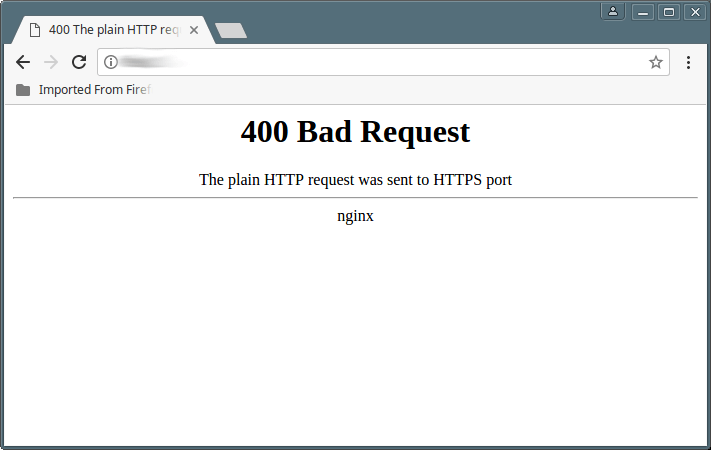






![100% thành công] Bật mí cách sửa lỗi 400 Bad Request đơn giản 100% Thành Công] Bật Mí Cách Sửa Lỗi 400 Bad Request Đơn Giản](https://techcare.vn/wp-content/uploads/2021/02/bad-request-la-gi.jpg)

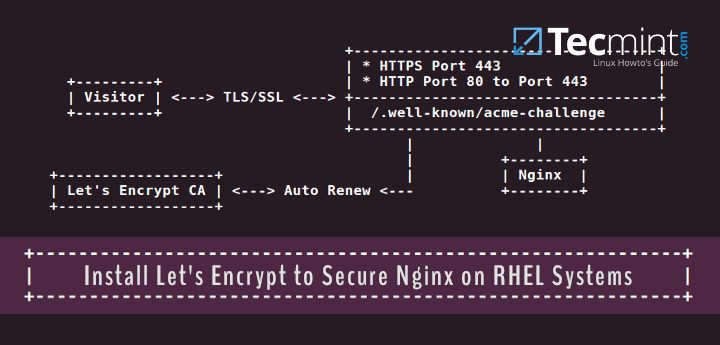


![Lỗi 400 Bad Request và cách khắc phục như thế nào [CẦN BIẾT] Lỗi 400 Bad Request Và Cách Khắc Phục Như Thế Nào [Cần Biết]](https://nhanhoa.com/uploads/attach/1618459924_loi-400-bad-request-va-cach-khac-phuc-2.png)



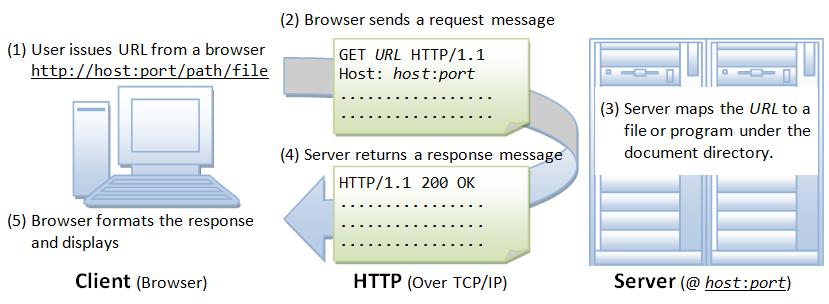






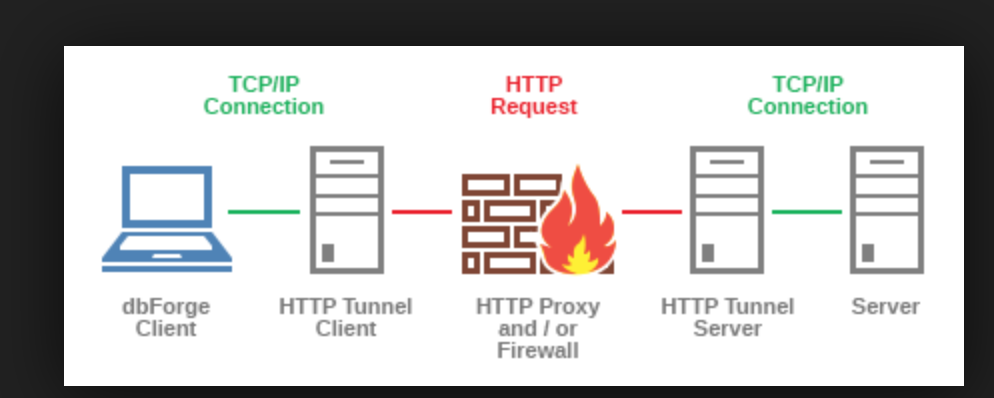


Article link: the plain http request was sent to https port.
Learn more about the topic the plain http request was sent to https port.
- Dealing with nginx 400 “The plain HTTP request was sent to …
- Fix “The plain HTTP request was sent to HTTPS port” Error in …
- Fix: The plain Http request was sent to Https port
- Nginx http to http redirect 400 The plain HTTP request was …
- How to Fix ‘Plain HTTP Request Was Sent to HTTPS Port’ in …
- Fix “The plain HTTP request was sent to HTTPS port” Error in …
- Redirect HTTP to HTTPS in Nginx – VegaStack
- How To Fix the Error 400 Bad Request – Alphr
- Use of plain HTTP. – tfsec – Aqua Security
- “400 Bad Request The plain HTTP request was sent to HTTPS …
- Page Error: The plain HTTP request was sent to HTTPS port
- The plain HTTP request was sent to HTTPS port | AWS re:Post
- 400 bad request-The plain http request was sent to https port …
- Error The plain HTTP request was sent to HTTPS port in Plesk
See more: nhanvietluanvan.com/luat-hoc